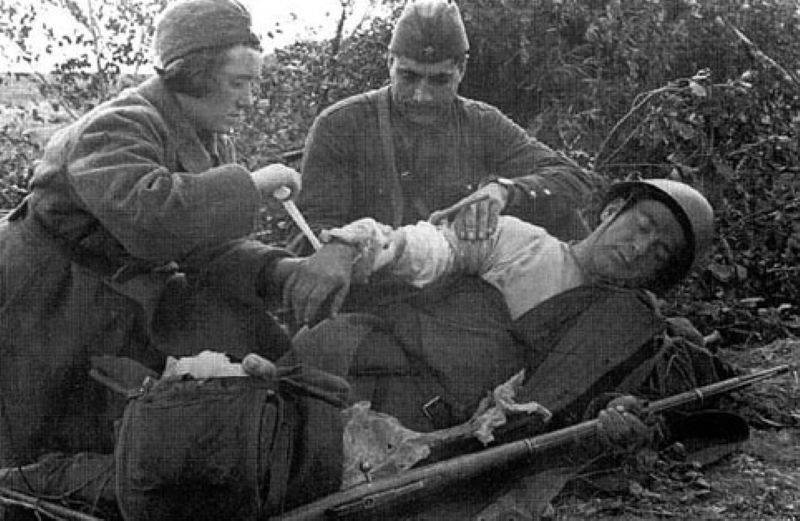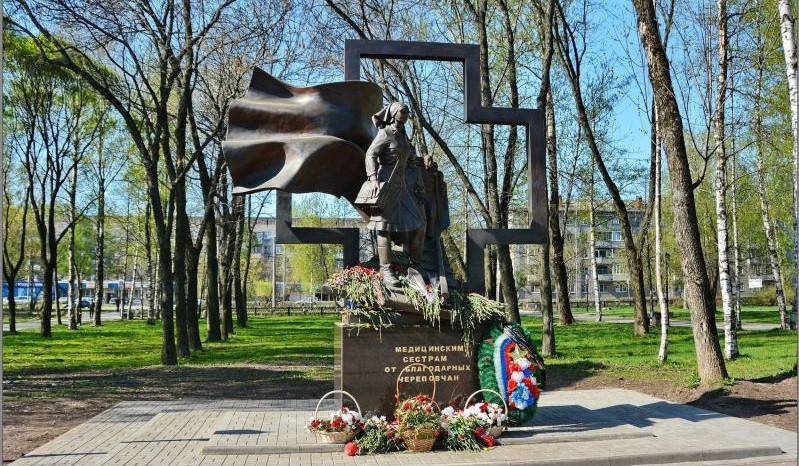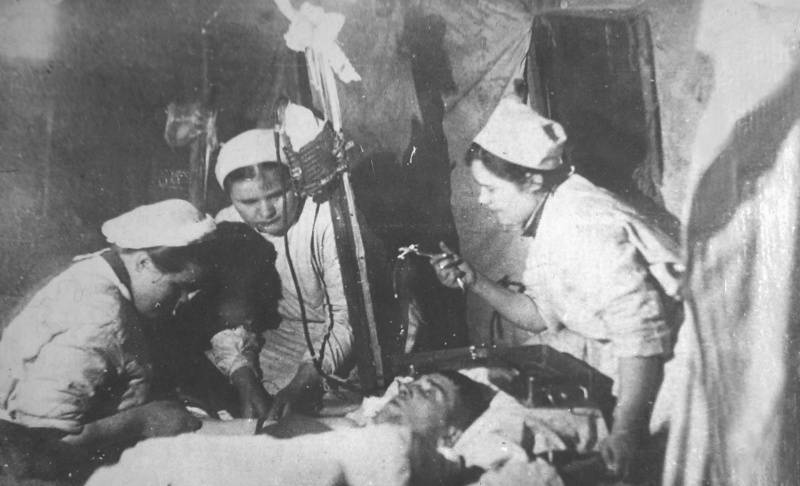Medics of War - Unknown Troops, Forgotten Losses

Quiet feat of military medical service
During the Great Patriotic War, losses among military doctors, nurses, orderlies and nurses were in second place after the losses of rifle units. According to the results of the war, they accounted for 12,5% of those killed out of 700 thousand medical personnel.
Medical workers were often in the thick of battles, but the monstrous damage in the frames was caused not only and not so much by this. Alas, but in the Red Army, which was preparing for the war as best it could, in all directions, by the summer of 1941, a well-developed military medical service had not been created.
Hitler, skillfully misleading Soviet intelligence, and here caught ours at a turning point, perestroika - those very sanitary battalions were just being created. Yes, and such a scale of wars in stories there was no new country at that time.
The experience of the First World War was not taken seriously, as absolutely unsuccessful. At the same time, even the fact that losses from diseases, compared with combat losses, in the Civil War was a much more significant share than in the imperialist war, was completely ignored.
Not to revive, but to create
Only in 1933 did the USSR think about creating some kind of unified military medical service. Then a conference of military field surgery was held in Leningrad. But the military field medical service itself began to be seriously formed only in 1940, when the Second World War had already begun. The situation in the world has heated up to the limit, and the USSR has already had to fight, moreover, on different fronts.
At the direction of the General Staff of the Red Army, leading military doctors began to hastily develop documents regulating their activities. The chief surgeon of the Red Army, Nikolai Burdenko, who was later called the "Marshal of Medicine", complained about the possible "confusion in the organization of medical care and methods of treating the wounded."
With the outbreak of war, without yet fully assessing the degree of threat, the command began to send qualified cadres of military field doctors to the front. But as the German offensive began to call and unfired civilian experts, many of whom were volunteers.
If in Nazi Germany fighters were pulled out of the battlefield mainly by armed men, then in the USSR there was simply not enough weaponsto give it to the nurses who dragged the wounded healthy men to the points where they were bandaged and operated on.
They worked according to the method of Pirogov: no matter how cruel it was, the hopeless wounded were carried out last, and such an opportunity was far from always. The nurses' training courses worked in a rush mode, ahead of the courses of military schools, and at the same time they were taught to shoot.
The question of where to get the weapon was decided in fact by itself. They took it from the wounded themselves, especially since additional and considerable rewards were assigned for taking out the wounded with weapons. In particular, when issuing awards to nurses and nurses, only the removal of the wounded with weapons from the battlefield was counted.
If there were not enough tools and medicines, then there was no question of blood for transfusion. Often, the doctors and nurses themselves, with the same blood types and Rh factors, they and the wounded lay down at the first-aid post for direct transfusion.

Perhaps the best monument to a military nurse is erected in Cherepovets, which during the war years turned into one large military hospital
Military medicine goes on the offensive
The Great Patriotic War gave a powerful impetus to the development of new treatment technologies in the USSR. Often they were developed by ordinary military surgeons from field hospitals. Although, of course, mostly practitioners with dissertations were the developers.
In particular, it was during the war years that Soviet scientists developed the drug thrombin, which quickly clots blood, the NIISI polio vaccine against typhoid fever, paratyphoid A and B, dysentery, cholera and tetanus, which affected many fighters, and the civilian population too.
At the height of the battles, domestic microbiology began to produce penicillin-crustosin; the shelf life of donated blood was extended, and a vitamin preparation to combat scurvy was put into production. And how many lives have been saved by the anti-tularemia vaccine, which has been forgotten today, available means for the prevention of influenza, the drug Vikasol to increase blood clotting, blood substitutes for transfusion.
Many scientists worked then right on the front line. In particular, it was in military field conditions that a preparation based on bovine blood "Gemokostol" was developed. Initially, it was planned to be used to speed up the rehabilitation of the wounded, but it turned out that it also helps fight an infectious disease known as night blindness.
After the start of the counter-offensive, things went much better for military doctors. The quality of work also increased, as doctors and junior staff appeared who already understood what war was, and funding from the state improved.
As a result, more than 70% of the wounded returned to duty, and 90% of the sick. These figures exceed those of Germany and its satellites.
How about glory?
The state, which already at the beginning of the German offensive was completely unexpected by such events, introduced government awards not only for military doctors, but also for orderlies and porters.
Already in August 1941, an order was issued by the People's Commissar of Defense, according to which medals "For Military Merit" or "For Courage" were relied on for the removal from the battlefield of 15 wounded with weapons, the Order of the Red Star for the removal of 25 wounded with weapons, and the Order for 40 wounded Red Banner, for 80 wounded - the Order of Lenin.
Among the military doctors were Heroes of the Soviet Union, many posthumously. It often happened that medical workers themselves either used weapons against the enemy for their intended purpose, or covered the wounded with their bodies. Cases have also been noted when medical officers, in the event of the death of the commanders of rifle subunits, took command of them.
Among the battles of the Great Patriotic War, the Battle of Stalingrad stands out - it is unrivaled in awarding medical service fighters. 20 military doctors were awarded the Order of Lenin in the battles near Stalingrad and for the city itself, many posthumously.

People in bathrobes soaked in blood really worked hard, sometimes for days without sleep and rest. The work of surgeons was actually put on the conveyor. Fainting among them right during operations was not uncommon.
During the war, about five thousand people died among military doctors, mostly surgeons, and more than nine thousand among paramedical workers. Of course, these figures are not comparable with the losses among medical orderlies and porters, but their number at the front was much larger.
It cannot be said that Soviet medicine did not take into account the experience of the Great Patriotic War. Only 36 medical officers died during the Afghan war. Although the conditions of service were still difficult, mainly due to power outages and problems with drinking water.
It was in Afghanistan that Soviet military medicine applied some innovations. And it's not just about modern medicines or equipment. Very often, the simplest solutions became salvation.
In particular, it was the doctors who insisted that the fighters wear hemostatic tourniquets on the barrels of machine guns, and in their pockets were portable filters for water from karez, teeming with bacteria. According to doctors who were in Afghanistan, they saw a lot of medicines and medical equipment that were in short supply in the Union for the first time in that war.
Information